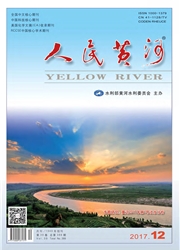

 中文摘要:
中文摘要:
通过室内水槽试验,探讨了坡度不连续沟道经泥石流侵蚀后纵剖面形态的演化特征。试验中底床纵剖面由3个坡度不连续的坡段组成,相邻坡段间形成了纵向上的坡度转折点,即凹转折点和凸转折点。结果表明:凸转折点附近在侵蚀过程中并没有产生溯源侵蚀,而是逐渐平滑化;凹转折点附近的侵蚀具有明显的冲击侵蚀特性,出现了明显的侵蚀坑;侵蚀后纵剖面起伏与沟床转折角有关,当转折角较小时,以水力侵蚀为主,侵蚀后纵剖面起伏较小,当转折角增大时,重力侵蚀逐渐增强,出现局部崩塌或滑坡,侵蚀后沟道纵剖面起伏增大。
 英文摘要:
英文摘要:
This paper adopted flume experiments to explore the bed longitudinal evolution of debris flows in slope-changing channels. The original bed longitudinal morphology was composed of three sections with varying slopes and every two adjacent slope-discontinuous sections produced longitudinal inflexion points, including concave and convex points. By means of experimental obser^^ation and data analysis, the fol-lowing conclusions have been obtained: in concave sections, the inflexion points are gradually smoothed and headward erosion seems quite weak ; in convex sites obvious impact erosion is detected with rather deep erosion hole; the topographic relief of post-experiment bed profile also correlates with inflexion points. Small transition angles imply lower relief where the erosion process is dominated by hydraulic erosion. When transition angle grows, mass erosion is intensified and landslides and avalanches emerge on a small scale, generating higher relief in the post-experiment bed profile.
 同期刊论文项目
同期刊论文项目
 同项目期刊论文
同项目期刊论文
 期刊信息
期刊信息
